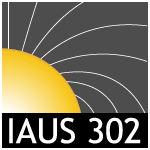The habitable zone is the range of orbital distances from a host star in which an exoplanet would have a surface temperature suitable for maintaining liquid water. This makes the orbital distance of exoplanets an important variable when searching for extra-solar Earth analogues. However, the orbital distance is not the only important factor determining whether an exoplanet is potentially suitable for life. The ability of an exoplanet to retain an atmosphere is also vital since it helps regulate surface temperatures. One mechanism by which a planetary atmosphere can be lost is erosion due to a strong stellar wind from the host star. The presence of a magnetosphere can help to shield a planetary atmosphere from this process. Using a simple stellar wind model, we present the impact that stellar winds might have on magnetospheric sizes of exoplanets. This is done with the aim of further constraining the parameter space in which we look for extra-solar Earth analogues.

 PDF version
PDF version
